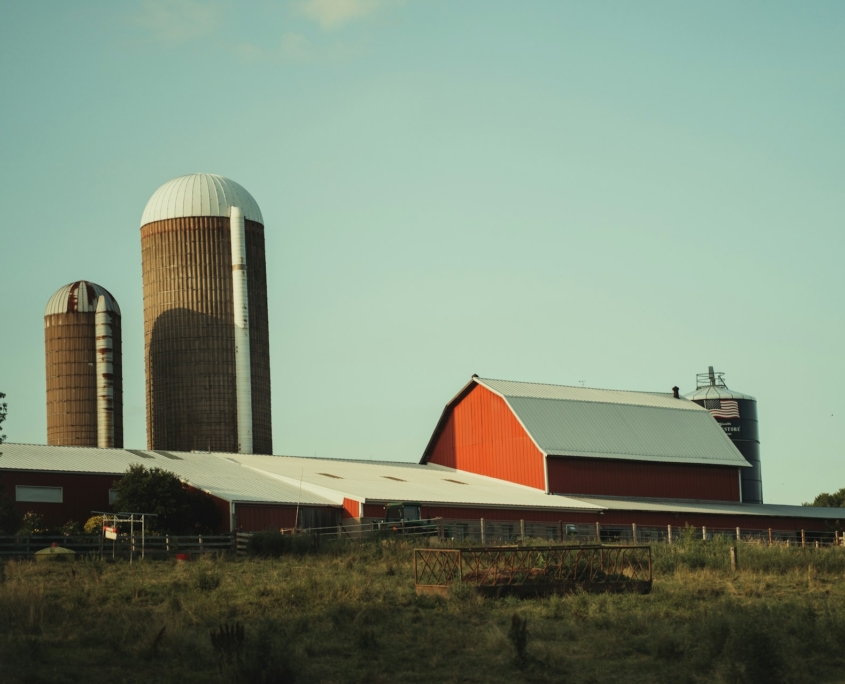AI Offers Promise for Africa’s Smallholder Farms
 More than 226.7 million people in Africa face starvation, yet the continent is poised to become the world’s future breadbasket. At the forefront of a technological revolution, Africa’s rich agricultural tradition embraces Artificial Intelligence (AI). The integration of AI into agrifood systems is expected to significantly boost efficiency, enhance yields and promote sustainable farming practices. Agriculture accounts for nearly a quarter of Africa’s Gross Domestic Product (GDP), but the continent still depends largely on food imports. By 2030, these imports are estimated to cost up to $100 billion annually. Smallholder farms play a crucial role in this agricultural landscape.
More than 226.7 million people in Africa face starvation, yet the continent is poised to become the world’s future breadbasket. At the forefront of a technological revolution, Africa’s rich agricultural tradition embraces Artificial Intelligence (AI). The integration of AI into agrifood systems is expected to significantly boost efficiency, enhance yields and promote sustainable farming practices. Agriculture accounts for nearly a quarter of Africa’s Gross Domestic Product (GDP), but the continent still depends largely on food imports. By 2030, these imports are estimated to cost up to $100 billion annually. Smallholder farms play a crucial role in this agricultural landscape.
AI and Smallholder Farms
There is extensive room for improvement and modernization in the smallholder farm industry. AI has the potential to support crop yield, irrigation, soil content sensing, crop monitoring, weeding and crop establishment. AI technology can optimize the use of fertilizers, pesticides and irrigation. A change that would improve the health of humans as well as the environment. Africa faces two significant obstacles to fully harnessing the potential of AI, access to reliable internet connectivity and affordable technology. Smallholder farmers remain confined to simple devices such as mobile phones, radio and TV to access digital resources, including the Internet despite the availability of digital opportunities.
Small Holder Farms: Constraints and Successes
Smallholder farms are vital in Africa, contributing significantly to food production, enhancing rural livelihoods and reducing poverty. These farms typically operate on less than two hectares of land, equivalent to approximately 2.47 acres each. These farms usually cultivate a diverse range of crops such as yams, beans, rice, cassava, maize, vegetables and fruits and raise livestock including goats, cows and chickens. Individual farmers or families manage these operations, facing common agricultural challenges in countries like Kenya, Nigeria and South Africa. Here are some of the agricultural constraints:
- Use of outdated technology -Regular Flooding
- Climate change -Desertification of crop and grazing land
- Diseases and pests -Lack of financing
- Agricultural Infrastructure -Shortage of farming skills
- High levels of soil degradation -Tough economic conditions
- Impact of Energy Shortages on agriculture, food, fiber and beverage production
Smart Farming Powered by Internet of Things (IoT) Technology
AI successes feature smart farming enhanced by Internet of Things (IoT) technology, which optimizes crop management through the use of sensors, gateways, and data analysis. These sensors collect vital data from the fields, which is then stored and analyzed. This process allows farmers to access real-time insights, enabling more efficient and informed decision-making.
Nigeria is home to 38 million smallholder farmers who account for 90% of Nigeria’s agricultural produce and employ 60% of the country’s labor force. More than 72% of residents live below the poverty line in Nigeria, where smallholder farms produce the majority of the country’s staples and employ millions.
AI Successes include Farmcrowdy, Nigeria’s first digital agriculture platform that connects small-scale farmers with smart farming techniques, quality farm inputs and access to superior markets to be able to earn a decent profit margin. Founded in 2016, Farmcrowdy began with 25,000 farmers. Currently, it is working with 50,000 farmers, with a plan to scale to 500,000 by the last quarter of the fiscal year 2020 and 3 million over the next 5 years.
AI successes feature Precision Agriculture, monitoring crop conditions, soil quality, weather patterns, and pest infestations. Additionally, Ujuzikilimo’s mission in precision farming aims to empower all farmers and stakeholders to make quick, informed, and data-driven decisions through the collection and analysis of agricultural data. The United Nations (U.N.). The initiative is exploring ways AI can be used to predict flood patterns and optimize Agrifood systems across Africa. Agrifood systems would predict the best times to plant, provide an assessment of soil health and monitor pest and disease outbreaks.
The Future of Full-Scale Agricultural Digitalization
The convergence of AI and agriculture in Africa offers a mix of potential benefits and challenges. While AI holds the capacity to enhance agricultural productivity and bolster food security, achieving widespread digitalization is still a goal out of reach. The claims of transformative impact often disconnect with the actual experiences of smallholder farmers, facing constraints like low literacy and scarce access to digital tools. Nonetheless, there are opportunities tailored to address both present and anticipated obstacles in smallholder agriculture, aiming to realize the full promise of digitalization in the sector.
– Pamela Fenton
Photo: Unsplash
